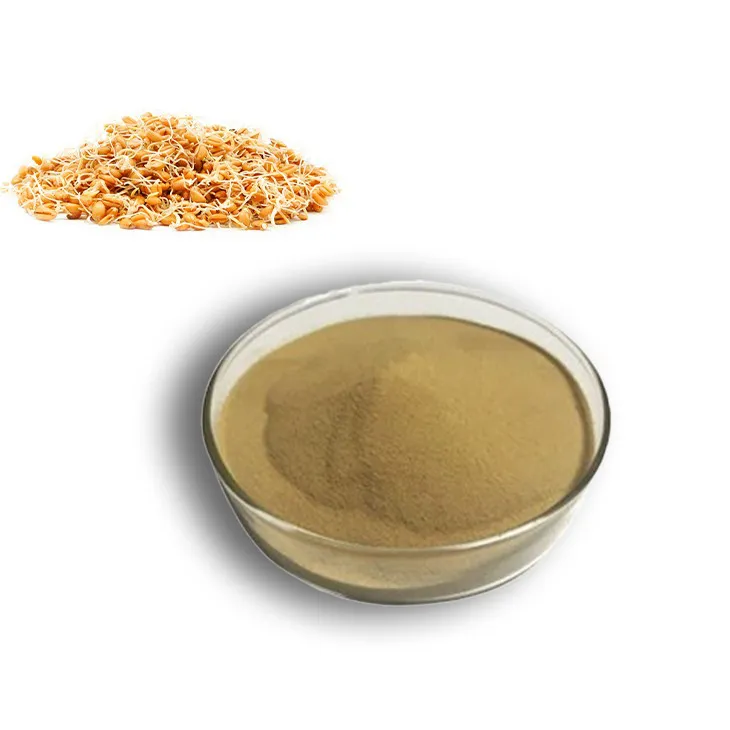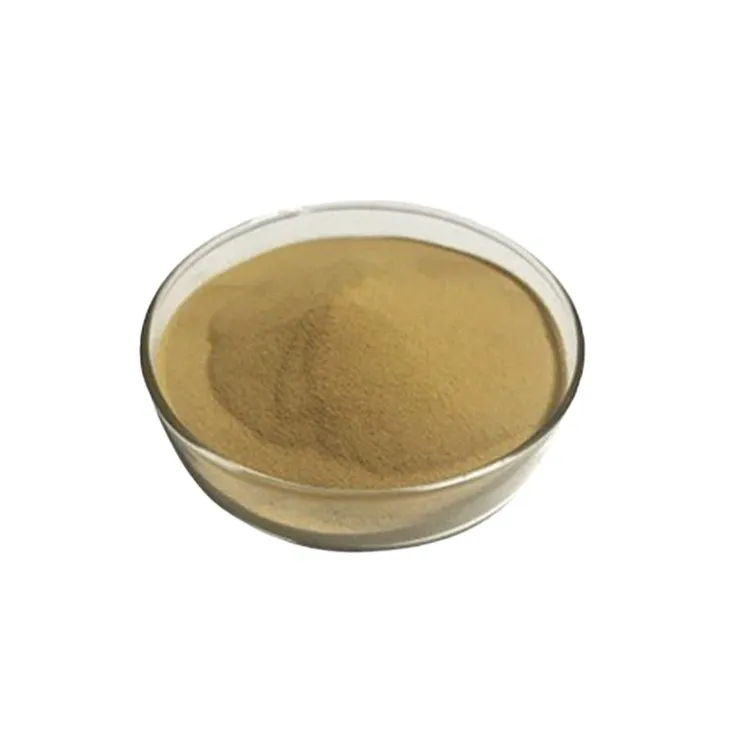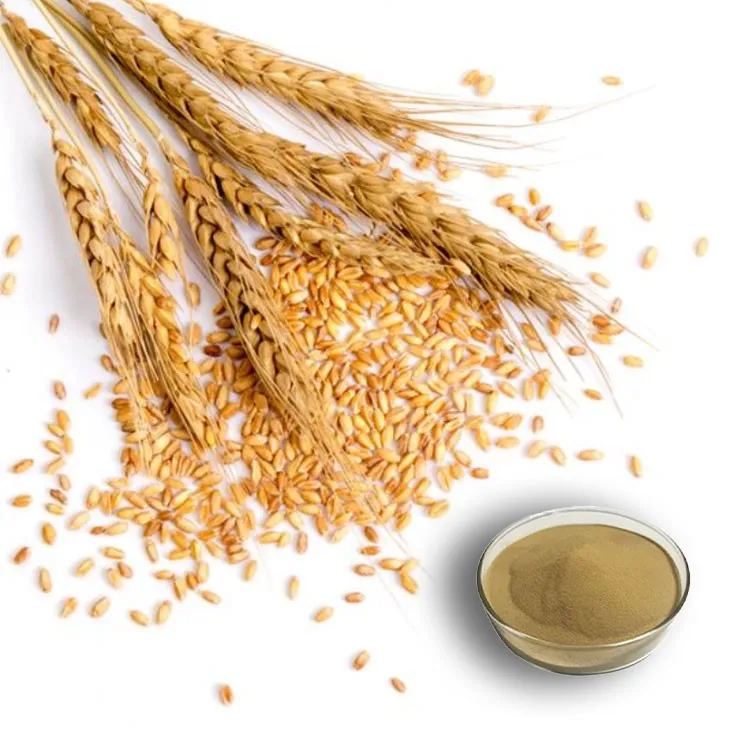- 0086-571-85302990
- sales@greenskybio.com
Is wheat germ extract beneficial for diabetes? Are these all safe and applicable for diabetic patients?
2024-11-13

1. Introduction
Diabetes has become a global health concern, affecting millions of people worldwide. As a result, there is an increasing interest in finding natural substances that can help manage the disease. Wheat Germ Extract is one such substance that has drawn attention. It is rich in various nutrients and bioactive compounds, which may potentially have beneficial effects on diabetes. However, it is crucial to determine whether these effects are real and, more importantly, whether it is safe for diabetic patients to use.

2. What is Wheat Germ Extract?
2.1 Composition
Wheat Germ Extract is derived from the germ portion of the wheat kernel. It is a concentrated source of nutrients. It contains high amounts of vitamins such as vitamin E, B - vitamins (including thiamine, riboflavin, and niacin), and minerals like zinc, magnesium, and selenium. Additionally, it contains amino acids, essential fatty acids, and a variety of bioactive compounds such as phytosterols and antioxidants.2.2 Production Process
The production of wheat germ extract typically involves several steps. First, the wheat germ is separated from the rest of the kernel. Then, it is processed through extraction methods, which can include mechanical pressing or solvent extraction, to obtain the concentrated extract. The resulting extract can be further refined and standardized to ensure consistency in its composition.
3. Potential Benefits for Diabetes
3.1 Blood Sugar Regulation
One of the main areas of interest regarding wheat germ extract and diabetes is its potential impact on blood sugar regulation. Some studies suggest that certain components in the extract, such as dietary fiber, may slow down the absorption of carbohydrates in the digestive tract. This can lead to a more gradual rise in blood sugar levels after a meal, preventing the sharp spikes that are often a problem for diabetic patients.3.2 Insulin Sensitivity
There is also evidence to suggest that wheat germ extract may improve insulin sensitivity. The bioactive compounds in the extract may interact with cells in the body, particularly muscle, fat, and liver cells, to enhance their response to insulin. Improved insulin sensitivity means that the body can more effectively use insulin to transport glucose from the bloodstream into cells for energy production or storage.3.3 Antioxidant Effects
Diabetes is associated with increased oxidative stress in the body. Wheat germ extract, with its rich antioxidant content, may help combat this oxidative stress. Antioxidants such as vitamin E and phytosterols can neutralize free radicals, which are highly reactive molecules that can damage cells and tissues. By reducing oxidative stress, it may be possible to prevent or slow down some of the complications associated with diabetes, such as nerve damage, kidney disease, and cardiovascular problems.3.4 Nutritional Support
Diabetic patients often have specific nutritional requirements. Wheat germ extract can provide a concentrated source of essential nutrients that may be lacking in their diet. For example, the B - vitamins play important roles in energy metabolism, and zinc and magnesium are involved in various enzymatic reactions in the body. By supplementing with wheat germ extract, diabetic patients may be able to improve their overall nutritional status, which in turn can have a positive impact on their health and diabetes management.
4. Safety Considerations for Diabetic Patients
4.1 Allergic Reactions
Some individuals may be allergic to wheat or components in the wheat germ extract. Allergic reactions can range from mild symptoms such as skin rashes and itching to more severe reactions like difficulty breathing and anaphylaxis. Diabetic patients who are considering using wheat germ extract should be aware of their potential for wheat allergies and consult their healthcare provider if they have a history of allergic reactions.4.2 Interaction with Medications
Wheat germ extract may interact with certain medications used to treat diabetes or other comorbid conditions. For example, it may potentiate the effects of blood - thinning medications due to its vitamin K content. It is important for diabetic patients to inform their doctor about any supplements they are taking, including wheat germ extract, to avoid potential drug - supplement interactions.4.3 Contamination Risks
Like any natural product, there is a risk of contamination in wheat germ extract. Contaminants can include pesticides, heavy metals, or microorganisms. High - quality extracts should be sourced from reliable manufacturers who follow strict quality control and safety standards to minimize these risks. Diabetic patients should ensure that they are using a pure and uncontaminated product.
5. Research Findings on Wheat Germ Extract and Diabetes
5.1 Animal Studies
Several animal studies have been conducted to investigate the effects of wheat germ extract on diabetes. In diabetic rats, for example, some studies have shown that supplementation with wheat germ extract led to improved blood sugar control, reduced oxidative stress, and enhanced insulin sensitivity. These results are promising, but it is important to note that animal studies may not always translate directly to humans.5.2 Human Studies
There have been some human studies on wheat germ extract and diabetes as well. However, the number of large - scale, well - controlled human trials is limited. Some small - scale studies have reported positive effects on blood sugar levels and lipid profiles in diabetic patients. For instance, a short - term study found that diabetic patients who took wheat germ extract supplements had a slight reduction in fasting blood glucose levels. However, more comprehensive and long - term human studies are needed to fully understand the benefits and safety of wheat germ extract for diabetes.6. How to Incorporate Wheat Germ Extract into a Diabetic Diet
6.1 Dietary Supplements
One of the most common ways to consume wheat germ extract is in the form of dietary supplements. These are available in various forms such as capsules, tablets, and powders. When choosing a supplement, it is important to select a high - quality product from a reputable manufacturer. Diabetic patients should also follow the recommended dosage instructions provided by the manufacturer or as advised by their healthcare provider.6.2 Food Sources
Wheat germ itself can be incorporated into the diet as a source of wheat germ extract. It can be added to cereals, smoothies, or baked goods. However, it is important to note that when consuming wheat germ in food form, the concentration of the bioactive compounds may be lower compared to a concentrated extract. Additionally, when adding wheat germ to foods, diabetic patients should be mindful of their overall carbohydrate intake to avoid excessive blood sugar spikes.7. Conclusion
Wheat germ extract shows potential benefits for diabetes in terms of blood sugar regulation, insulin sensitivity, antioxidant effects, and nutritional support. However, there are also safety considerations that diabetic patients need to be aware of, including allergic reactions, potential drug - supplement interactions, and contamination risks. While some research, both in animals and humans, has shown promising results, more in - depth and long - term human studies are required to firmly establish its effectiveness and safety for diabetic patients. In conclusion, diabetic patients should approach the use of wheat germ extract with caution and consult their healthcare provider before incorporating it into their diabetes management plan.
FAQ:
1. What is wheat germ extract?
Wheat germ extract is a substance derived from the germ of the wheat kernel. It contains various nutrients such as vitamins (like vitamin E), minerals, and healthy fats.
2. How might wheat germ extract be beneficial for diabetes?
Some potential benefits for diabetes may include its antioxidant properties due to components like vitamin E. Antioxidants can help reduce oxidative stress which is often elevated in diabetes. It may also potentially play a role in improving insulin sensitivity, though more research is needed in this regard.
3. Is wheat germ extract safe for all diabetic patients?
While generally considered safe for most people, some diabetic patients may have allergies to wheat or its components. Also, if a diabetic patient is on certain medications, there could be potential interactions. For example, if it affects blood sugar levels too much, it could interfere with the dosage and effectiveness of diabetes medications. So, it's not necessarily safe for all diabetic patients without proper medical evaluation.
4. Can wheat germ extract replace diabetes medications?
No. Wheat germ extract should not replace diabetes medications. While it may have some potential benefits, diabetes medications are specifically designed to control blood sugar levels. Wheat germ extract can, at best, be considered as a complementary addition to the overall treatment plan, but only under medical supervision.
5. How much wheat germ extract can a diabetic patient consume?
There is no one - size - fits - all answer. The amount that a diabetic patient can consume depends on various factors such as their overall health, other medications they are taking, and their individual tolerance. It is best to consult a healthcare provider to determine an appropriate amount.
Related literature
- The Potential of Wheat Germ in Diabetes Management"
- "Wheat Germ Extract: A New Hope for Diabetic Patients?"
- "Evaluating the Safety and Efficacy of Wheat Germ Extract in Diabetes"
- ▶ Hesperidin
- ▶ Citrus Bioflavonoids
- ▶ Plant Extract
- ▶ lycopene
- ▶ Diosmin
- ▶ Grape seed extract
- ▶ Sea buckthorn Juice Powder
- ▶ Fruit Juice Powder
- ▶ Hops Extract
- ▶ Artichoke Extract
- ▶ Mushroom extract
- ▶ Astaxanthin
- ▶ Green Tea Extract
- ▶ Curcumin
- ▶ Horse Chestnut Extract
- ▶ Other Product
- ▶ Boswellia Serrata Extract
- ▶ Resveratrol
- ▶ Marigold Extract
- ▶ Grape Leaf Extract
- ▶ New Product
- ▶ Aminolevulinic acid
- ▶ Cranberry Extract
- ▶ Red Yeast Rice
- ▶ Red Wine Extract
-
Acerola Extract
2024-11-13
-
American Ginseng Root Extract
2024-11-13
-
Aguaje Extract
2024-11-13
-
Passionflower Extract
2024-11-13
-
Alfalfa Meal
2024-11-13
-
Tormentil Extract
2024-11-13
-
Chaste Berry Extract
2024-11-13
-
Apricot Powder
2024-11-13
-
Cactus Extract
2024-11-13
-
melatonin extract
2024-11-13





















